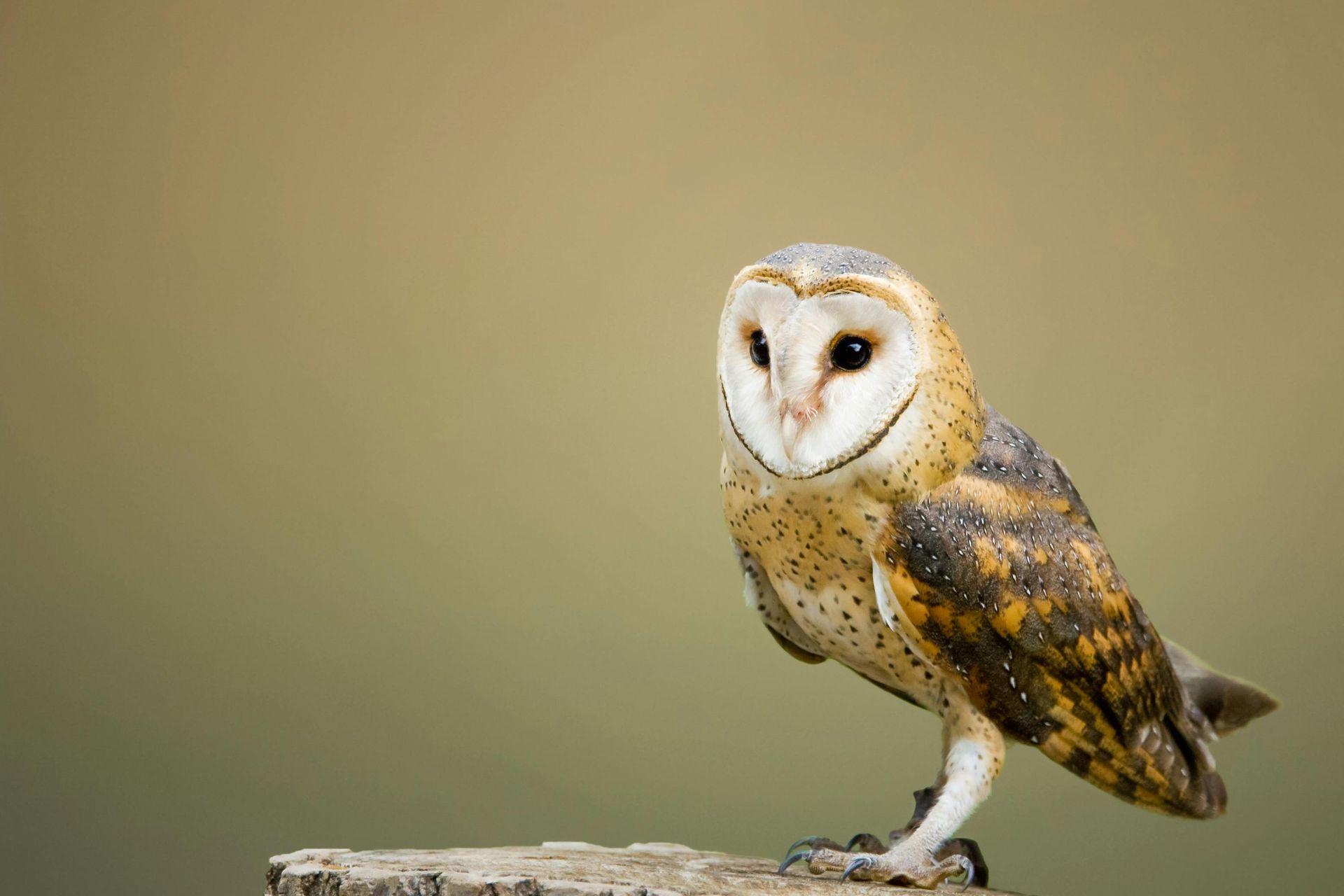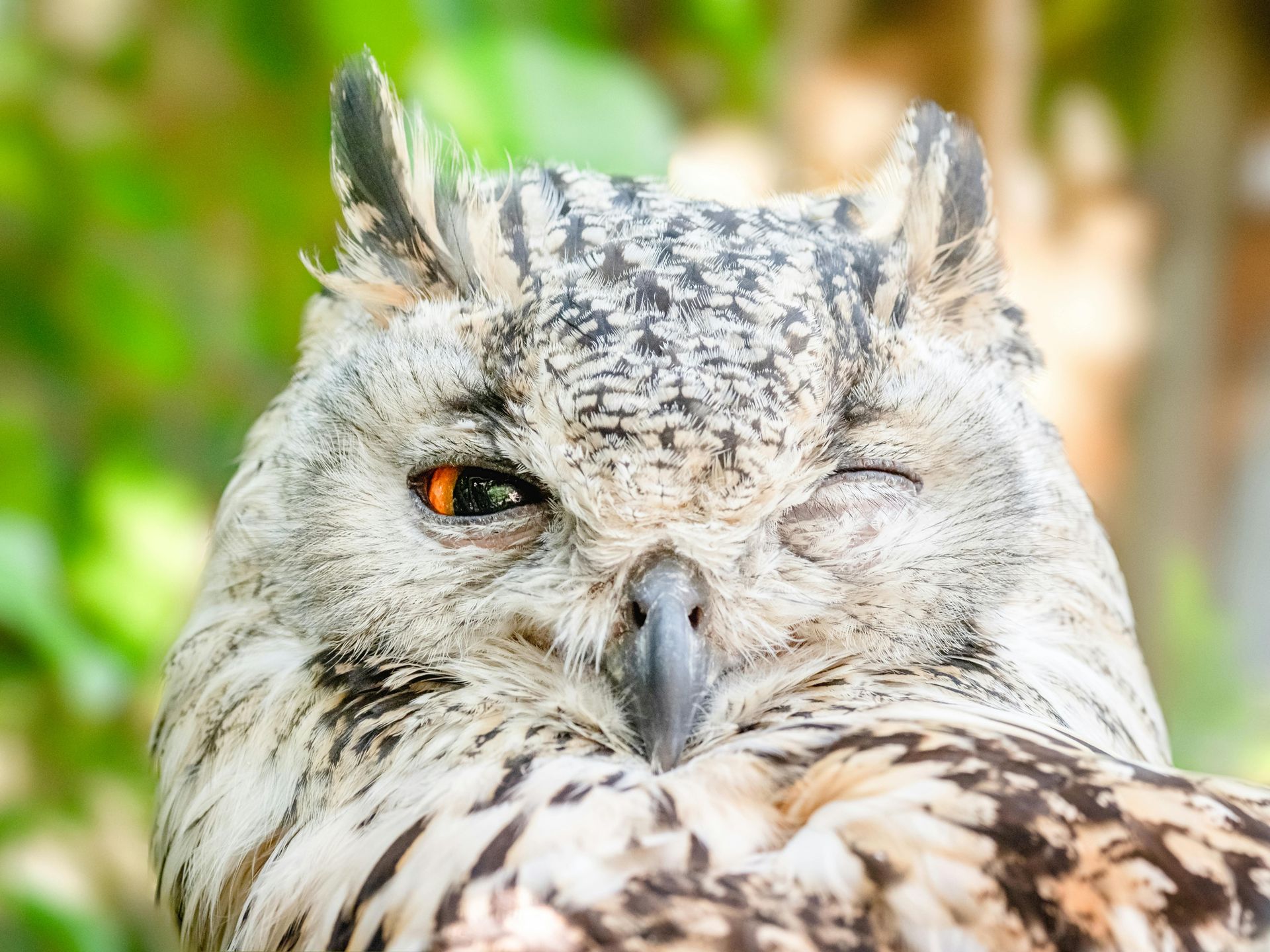Owls are nocturnal birds of prey known for their silent flight, exceptional night vision, and keen hearing. Found on every continent except Antarctica, owls play a crucial role in controlling rodent and insect populations, maintaining balance in their ecosystems. Their forward-facing eyes, hooked beaks, and sharp talons make them highly efficient hunters.
Owls vary significantly in size, from the tiny Elf Owl, standing just 5 inches tall, to the formidable Great Horned Owl, with a wingspan exceeding 5 feet. Their distinct facial discs help funnel sound to their asymmetrically placed ears, giving them an incredible ability to detect prey in total darkness.
Owls are mostly solitary and territorial, nesting in tree cavities, abandoned nests, cliffs, and even man-made structures. Many species mate for life, with females incubating eggs while males provide food. Young owls rely on their parents for several months before becoming independent hunters.
Despite their adaptations, owls face threats from habitat destruction, vehicle collisions, and secondary poisoning from rodenticides. Conservation efforts focus on preserving habitats and promoting safer pest control methods.

For your safety and the well-being of wildlife, please observe animals from a distance and avoid touching or disturbing them. If you encounter an animal that appears injured or in distress, contact a licensed wildlife rescue organization for guidance before intervening.
Found An Animal? Not sure how to help a wild animal in need? Learn when to step in, who to call, and how to help safely.
Did You Know?
- Owls can rotate their heads up to 270 degrees without cutting off blood flow.
- Their tubular-shaped eyes provide excellent depth perception but limit peripheral vision, requiring them to move their heads to see around them.
- Specialized wing feathers allow for soundless flight, making them stealthy hunters.
- Some species, like burrowing owls, prefer underground nests rather than trees.
- Great horned owls have a powerful grip strong enough to crush bones.
- Unlike common belief, owls are instinctive hunters but not particularly intelligent problem-solvers.
- Barn owls are one of the best natural rodent controllers, consuming thousands of mice annually.
- Owls have a third eyelid, called a nictitating membrane, which protects their eyes while maintaining visibility.
Problems Faced In The Wild
- Habitat Loss: Deforestation and land development reduce nesting and hunting grounds.
- Rodenticide Poisoning: Consuming poisoned prey leads to secondary poisoning and fatalities. Owls can also feed poisoned meals to their babies.
- Vehicle Collisions: Hunting near roads increases the risk of being struck by vehicles.
- Climate Change: Shifts in prey populations and habitat conditions affect owl survival.
- Nest Competition: Other birds and mammals often claim owl nesting sites.
Tips For Cohabitation
- Install Nest Boxes: Provide nesting options in rural and suburban areas.
- Use Safe Pest Control: Avoid rodenticides that can harm owls through poisoned prey.
- Reduce Light Pollution: Minimizing artificial lighting helps owls maintain natural hunting behavior.
- Preserve Old Trees: Mature trees with hollows serve as crucial nesting sites.
- Drive with Caution: Be mindful of owls hunting near roads at night.
- Spread Awareness: Educate others about the benefits of owls in the ecosystem.



